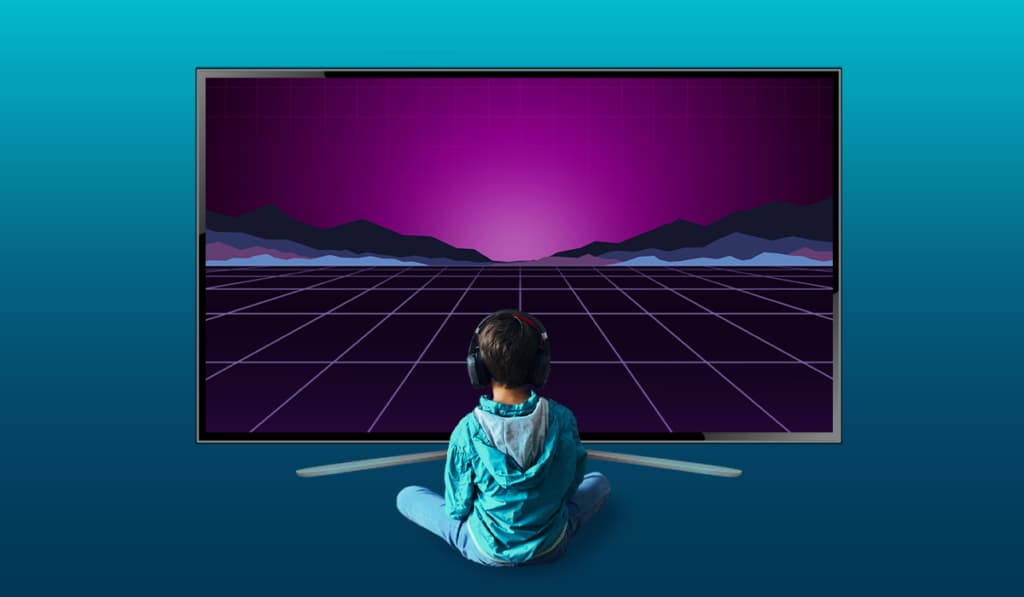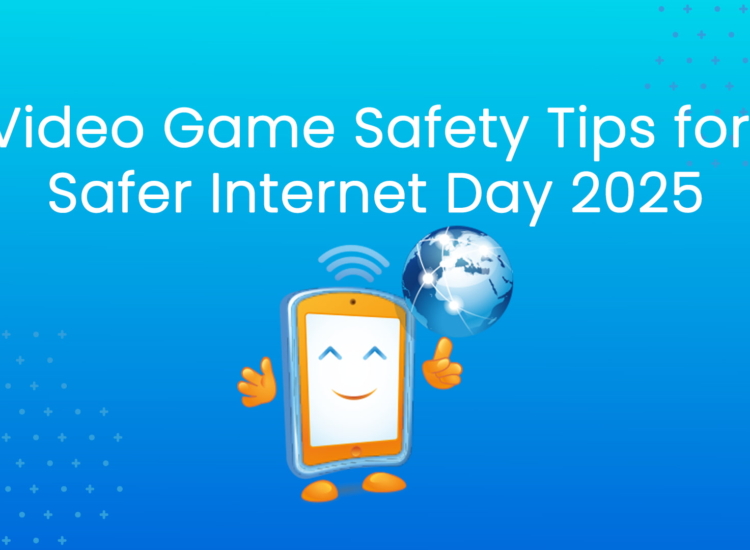Ask the Expert: Balancing Your Family’s Screen Time

Summer is winding down and many kids have already returned or are preparing to go back to school. While some schools will continue to work remotely, many are welcoming kids back in-person. Throughout 2020 and into 2021 parents have, by necessity, been more flexible around screen time. Screens are now used as classrooms, neighborhood hangouts, and entertainment centers keeping kids (and adults!) engaged with their peers and the outside world.
As the school year gets underway, many parents will be looking to recalibrate household rules around screen time and encourage their children to strike a more consistent balance between game time, homework and real-world activities and interactions. But after a year of more relaxed rules, how can parents reintroduce screen time rules without engaging in the old tug-of-war?
What Works for Your Family?
Every parent knows that no two children are the same. Each child has their own mentality, frustration points, and personalities that drive them to be who they are meant to be. Each child requires a different approach based upon how he, she, or they interact with life challenges and learns to navigate the world around them. Every family is similarly uniquely different; and no one set of blanket rules works in the same way within a family’s constellation of life. As such, each family is going to have their own challenges and solutions when dealing with everyday problems and family structures – screen time included.
Each child requires a different approach based upon how he, she, or they interact with life challenges and learns to navigate the world around them.
The individual battles with screen time is going to vary greatly between families and their family systems. Family systems are complex social systems in which members interact to influence each other’s behaviors. Think of it as a cause and effect system that the family interactions consciously or unconsciously attempt to stay in homeostasis (balance). As something happens to one part of the family, the other parts of the family attempt to recalibrate and bring harmony and equilibrium. When psychologists look at the family system structure, it is important to take a holistic approach to what changes need to occur to bring the family systems back from chaos.
Regardless of the external pressures of society bearing down upon families to make choices about screens; families need to look to the approach of what works for them as a unit. Parents can utilize some simple boundaries to help determine where the lines are drawn and where they may need to ease up on some of their personal concerns.
How Much Screen Time is Too Much Screen Time?
The first question that is always asked of psychologists or mental health professionals is “How much screen time is too much screen time?” Unfortunately, researchers do not have an answer for this question, as much of the research is convoluted and not clear on the impact of video games or screen time. Former statements on the topic have been retracted often and continue to change.
Some of the major players in the field (e.g. APA, AAP, etc.) have suggested that there should be limits to screens based upon the age of the individual. Yet, the research does not hold up well with suggested determinations due to poor methods used when determining these boundaries. Children learn through play and during times of the pandemic and a post-COVID world, screens have been one of the few safe ways to engage with peers and others.
Psychologists, mental health professionals, and medical professionals attempt to err on the side of caution when examining this question. The best answer we can provide when working with families about screen time is to establish what works best for your family dynamics. How does it affect the family? What rules need to be established for your family in order to make the system work? Maybe screen time is set daily with specific time parameters, or only after daily chores/work are/is completed. Parents are the best sources of information to make these determinations and therefore should be considered the experts of the family. Advice from professionals is helpful to incorporate, but it has to work within the family structure that is present already and it is important to note that there is no one-size-fits-all solution.
However, there are instances where the child or adolescent may engage with screens and neglect other aspects of their lives. In such cases, it is important to impose some form of limitation before the child can proceed with their screen time; whether it be video games, watching TV/YouTube/streams, or engaging with their favorite online community. Setting boundaries is the best course of action and an important one for families to implement, not just with video games, but all instances where a child or adolescent may be having difficulties with any activity.
Having a conversation about limits and encouraging the child to be a part of the conversation is exceptionally important. Children and adolescents require guidance and nurturing of course, but encouraging the child to be a part of the conversation allows them to have a lasting impact and begins their participation in the concept of setting their own limits. Research has shown that when we involve the child in the decision-making process and help them critically think through the problem to find a solution; it creates a meaningful memory for the child which acts as a roadmap for future problem-solving abilities. It is important to not be overly restrictive, but allow the conversation to flow into the creation of the rules and boundaries and over time adjust them when warranted.
Pro-tips for Establishing Household Rules:
Identify Family Rules: Identify and clearly define the rules of the family household. Younger children can only remember one to two rules at a time and require chances to learn what rules are, but older children have the capabilities to understand rules in more sophistication. Parents will want to avoid rules that are vague such as “be good” or “just don’t do anything bad” as it is not clearly defined. Rules should be clearly defined so that children and teenagers know what to expect.
Explain the Rules: Explain what each rule means and give examples of them, ensure that all family members understand what each rule entails. There may be parts of the rules that need further explanation, and it is encouraged to explain them with clarity. Create a chart if need be and set expectations of what will happen if the rule is not followed. Are there no screens until chores are done? Homework has to be finished before screens are used? Are phones allowed at the dinner table? These are simple questions that can help decide what the rules of the household are.
Use Positive/Negative Consequences for Rules: Families are generally told to enforce negative consequences such as losing privileges, limiting screen time or restricting social events when rules are broken. This is only half of the equation at best when establishing rules for families. There has to be positive reinforcement as well, such as labeled praise, relaxing of rules where appropriate, additional freedoms (such as extra screen time or a treat) in order to have children and teenagers understand what is acceptable and what is not. This helps to reframe the conversation around what rule was broken and what is the consequence for it. It allows the parents to say, “we both knew the rules, you did/didn’t follow them, here is the consequence for that” and take the guilt and friction off of the parents. Reframe the issue back to the child or teenager that their lack of following/or following the home rules led to this decision therefore they decided to have consequences that are either positive or negative. This needs to be paired with the positive reinforcement that helps children feel like they accomplished a feat which continues to build internal motivation to earn rewards as well.
Advice from professionals is helpful to incorporate, but it has to work within the family structure that is present already and it is important to note that there is no one-size-fits-all solution.
Parental Controls: Use the ESRB rating system, parental controls, and other helpful tools that are already out there and easily available for parents to use when needed. Parental controls are a great backup to help enforce the household rules in a pinch. Virtually every digital device offers controls to manage not just how long kids can play, but when. Parents in the know-how tend to use these tools to great success.
Be Flexible: According to a recent ESRB survey conducted by Hart Research Associates, 79% of parents have household rules around screen time. Most parents are flexible with their rules around screen time. This style of parenting is usually seen as a positive to the children, parents, and family structure, but is based upon a set of rules already in place. Having the flexibility to bend the rules in both directions as needed, and dependent upon the situation, has been shown to work well with engagement and family bonding. The caveat is that there are rules that have been established that can “flex” as needed for the situation, some perhaps more than others like when it involves spending money. And, as children mature and their lives evolve, so should your household rules.
Lead By Example: It is of the utmost importance that parents and caregivers are at all times appropriately modeling the behaviors they want to see in the family. Children and teenagers look to their parents for guidance (yes, they do, even though it does not always seem so) in how to engage the world around them and interact with others. If parents are on their screens in front of the kids, then the children tend to follow suit. Be aware of what is happening around you and put the screens down yourself to be present and have more personal interactions with your children.
Indeed, there are many positive aspects of playing video games, but parents need to guide their children so they can reach the maximum benefits. How much time to do the children spend playing, are school grades appropriate, can the skills be extrapolated into real life situations, and so on. This is where appropriate boundaries at home come into play to help the family understand the concepts and implementation.
Most importantly, by having your child engage in the process of establishing rules about screen time limit, they build the confidence to solve their own problems and engage with life in a prosocial manner. And isn’t that the end goal for all parents?

Dr. Anthony Bean
Dr. Anthony Bean is a Licensed Clinical Depth Psychologist, video game researcher, and the Executive Director at The Telos Project, a thriving nonprofit mental health clinic in Fort Worth, Texas which focuses on video gamers and their families. He has been consulted as an expert for CNN, Inverse, Polygon, and internationally for Gehirn & Geist, while also appearing on Radio, Podcasts, and being a sought after Keynote Speaker and conference speaker in the United States, Canada, and Russia. He holds a Doctorate in Philosophy in Clinical Depth Psychology from Pacifica Graduate Institute and specialize in the therapeutic implications of video games and gaming, working with children and adolescents, and the use of video game character identification as a therapeutic technique. He created Geek Therapeutics, a company that teaches clinicians, professionals, and parents how to relate to their clients and families who play video games, Dungeons and Dragons, and other geek cultural artifacts. He has also authored multiple academic articles, book chapters, and the four books Working with Video Gamers and Games in Therapy: A Clinician’s Guide (Routledge, 2018) and The Psychology of Zelda: Linking Our World to the Legend of Zelda Series (Ben Bella, 2019), Integrating Geek Culture Into Therapeutic Practice: The Clinician’s Guide To Geek Therapy (Leyline Publishing, 2020), and The Psychology of Final Fantasy: Surpassing The Limit Break (Leyline Publishing, 2020)



